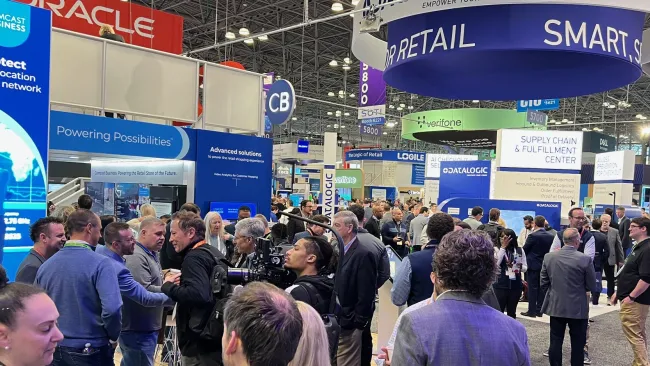This time of year, retailers are laser-focused on getting ready for the busy holiday season – but don’t forget to prep for that hectic time of year that will soon follow: returns season.
The National Retail Federation predicts holiday retail sales will grow between 4% and 6% this year, nearing $5.2 trillion, which is great news for brands but can also lead to many headaches come January when returns start rolling in post-holidays.
Set yourself up for success by taking time now to make your returns process as quick and frictionless as possible, for your customers and employees alike.
1. Improve the return experience
If your return experience is easy and hassle-free, you’re more likely to retain customers’ loyalty afterward. First, make sure you have omnichannel customer experience (CX) support so customers can initiate returns in the channel of their choice.
Also be sure to empower your associates to deliver seamless interactions by putting the information they need at their fingertips – with streamlined back-office processes and a good knowledge base. And since customers may already be frustrated when they contact your business to return something, be sure your associates are well-trained in how to offer empathetic support.
2. Look for upselling and cross-selling opportunities
When associates provide a positive return experience for customers, it gives associates the chance to suggest related or complementary products the customers might like.
Returns offer opportunities for upselling and cross-selling, but only if associates demonstrate how well they know your customers. Deliver personalized recommendations that are based on customers’ purchase history and preferences.
3. Offer instant exchanges
Customers initiating a return want a quick and easy resolution, and your brand wants to hold on to the revenue you generated through that original purchase. Achieve both goals by offering instant exchanges.
Give customers the option to exchange the item they want to return for an alternative one. This can prevent them from abandoning their purchases altogether and lead to immediate revenue.
4. Integrate returns into your loyalty program
Loyalty programs should be a part of any retailer’s customer experience strategy, and they should extend to returns, too. Offer bonus points or rewards to customers who exchange or return items to make it a more positive experience.
Not only will this keep customers engaged, but you can use the data you have on loyalty program members (like past purchases) to quickly identify upsell, cross-sell, and instant exchange opportunities.
5. Leverage data insights
There are many insights you can gain from returns data, so make sure you are analyzing it and using it to identify trends. Data analytics can help you understand why certain products are returned, which can inform decisions around product improvements, marketing strategies, and inventory decisions.
6. Focus on post-return follow-up
Don’t let customers’ returns be their last interactions with your brand. Hopefully you’ve provided a good enough return experience that they’ll remain loyal to your business, but consider reaching out to them after the return is complete, too.
Offer personalized discounts or promotions to re-engage them and encourage them to make a new purchase.
Embrace a proactive CX approach
Taking the time to invest in people, solutions, and strategies to handle returns now will pay off once January arrives and your stores or contact centers are inundated with returns.
A CX outsourcing partner with retail expertise can help you figure out the best way to make the returns process easy on your customers and associates – and profitable for your brand.
6 ways retailers can convert returns into revenue

















